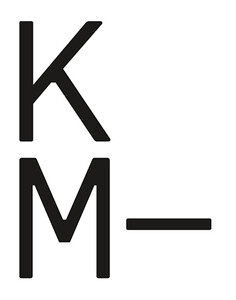Ákos Ezer
June 29–September 5, 2019
Burgring 2
8010 Graz
Austria
Hours: Tuesday–Sunday 10am–6pm
T +43 316 740084
info@halle-fuer-kunst.at
Peles Empire. The Sky Opens Twice
Yesterday becomes today, top becomes bottom, inside becomes outside: the shift in paradigms and perspectives is the nexus of content in the solo exhibition The Sky Opens Twice by the Berlin-based artist duo Peles Empire, on show at the Künstlerhaus, Halle für Kunst & Medien (KM– Graz). Several large-format new productions toy with the perception of exhibition visitors by adapting, mirroring, and distending the venue’s architecture.
The agenda of Peles Empire involves scrutinizing the relations between original and copy, but also repetitively applying various reproduction techniques. For over a decade now, the artist group has been devoted to the interplay between origin and repetition. Serving as a historical visual template for all of their work are photographs of Peleș Castle in the Romanian town of Sinaia. However, the current sculptures and spatial installations usually only vaguely reference their source, which is in fact almost invisible due to prolific copying.
The Sky Opens Twice (2019) is the title of a large-format installation in the main hall of the KM–. It also references a page from the first collage novel by Max Ernst, La femme 100 têtes, from the year 1929. The sky above the KM– appears to open, as the title indicates, for the portrayal of the large ceiling of windows over the exhibition hall, measuring more than 100 square meters, which now also extends over its lateral walls. As curator Jana Franze explains, The Sky Opens Twice illustrates the variability of reality, indicating how the present—even if not always immediately apparent—draws on the past.
Ákos Ezer. Ábstract Hungary
In showing the work of Ákos Ezer, curator Sandro Droschl is presenting a Hungarian artist of the younger generation who is thematically processing the present-day reality of his home country. The usual subjects of his paintings are human figures, frequently male, immersed in a precipitous state, either deliberately or in slapstick-like way. A new series of paintings shows gigantic portraits with oversized twisted necks. The fall and the bodily contortions become gestures of content in Ezer’s works, which tend to overtake the protagonists in everyday situations. The gaily colored and figurative compositions tap into an abstract language of form, while a touch of humor hones the rendering of the stumbling blocks of both private and public life.
With these bodies, seemingly distorted by strange movements, the artist powerfully speaks of the foundering, the clumsiness, and the fallibility of the individual and of society as a whole. Ezer is positioned in the artistic tradition of ironically twisted “social realist” painting that not only bespeaks the impact of outside conditions on the individual. Also, the protagonists with their stoic dynamism—who are bendable and resistant despite all tumbles, yet still astonishingly tranquil and, as such, seemingly “strong”—illustrate the (naïve or perhaps realistic after all?) hope of “advancing” in life. It is through the stringency of a societal analysis of current “illiberal” Hungary that Ákos Ezer arrives at an act of abstraction with admirable clarity.
This propensity for abstracting complex social circumstances, the willingness to change, and a tenacity of analysis and representation distinguish the Hungarian art scene, especially its “abstract artists” from the 1960s to the present day. In 2017, the KM– showed appreciation for this scene by exhibiting 25 essential artistic positions in the cross-generational, dialogical exhibition Abstract Hungary. A publication that extends both projects of the same name even further offers an abstracted view of Hungary.
The Künstlerhaus, Halle für Kunst & Medien (KM– Graz) stands for a house of art and its media—a place where the exhibition, production, and discussion of art are brought up to date, serving as a platform for essential issues concerning artistic producers and also visitors who actively partake in related discourse.

